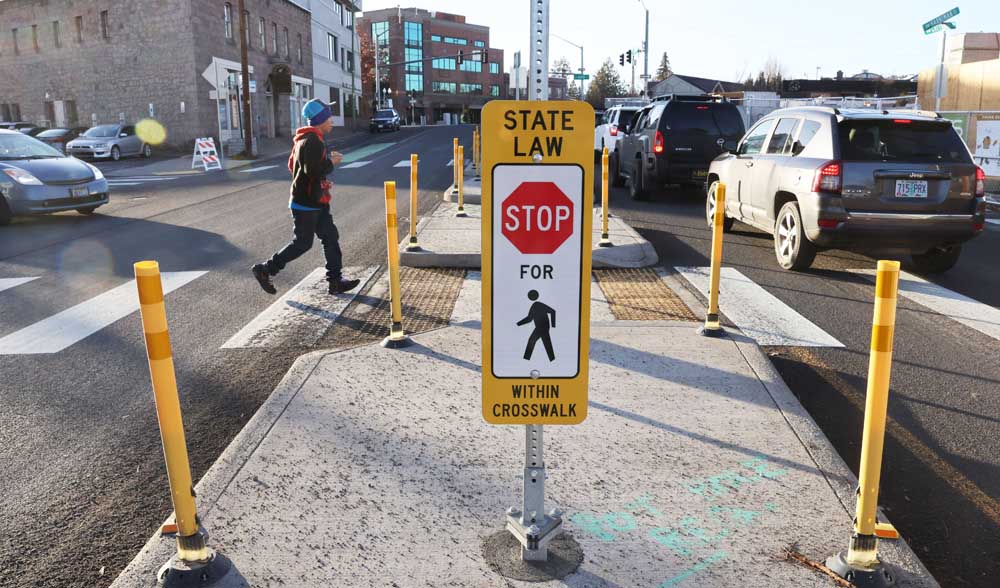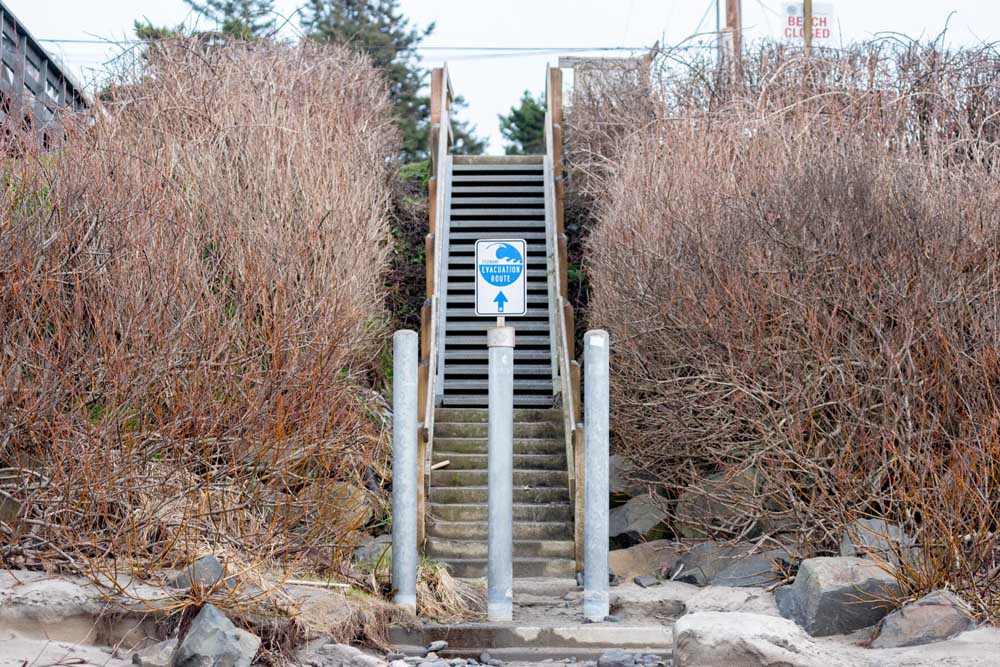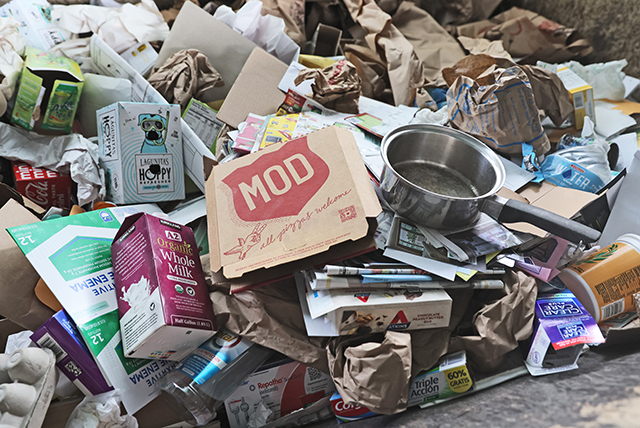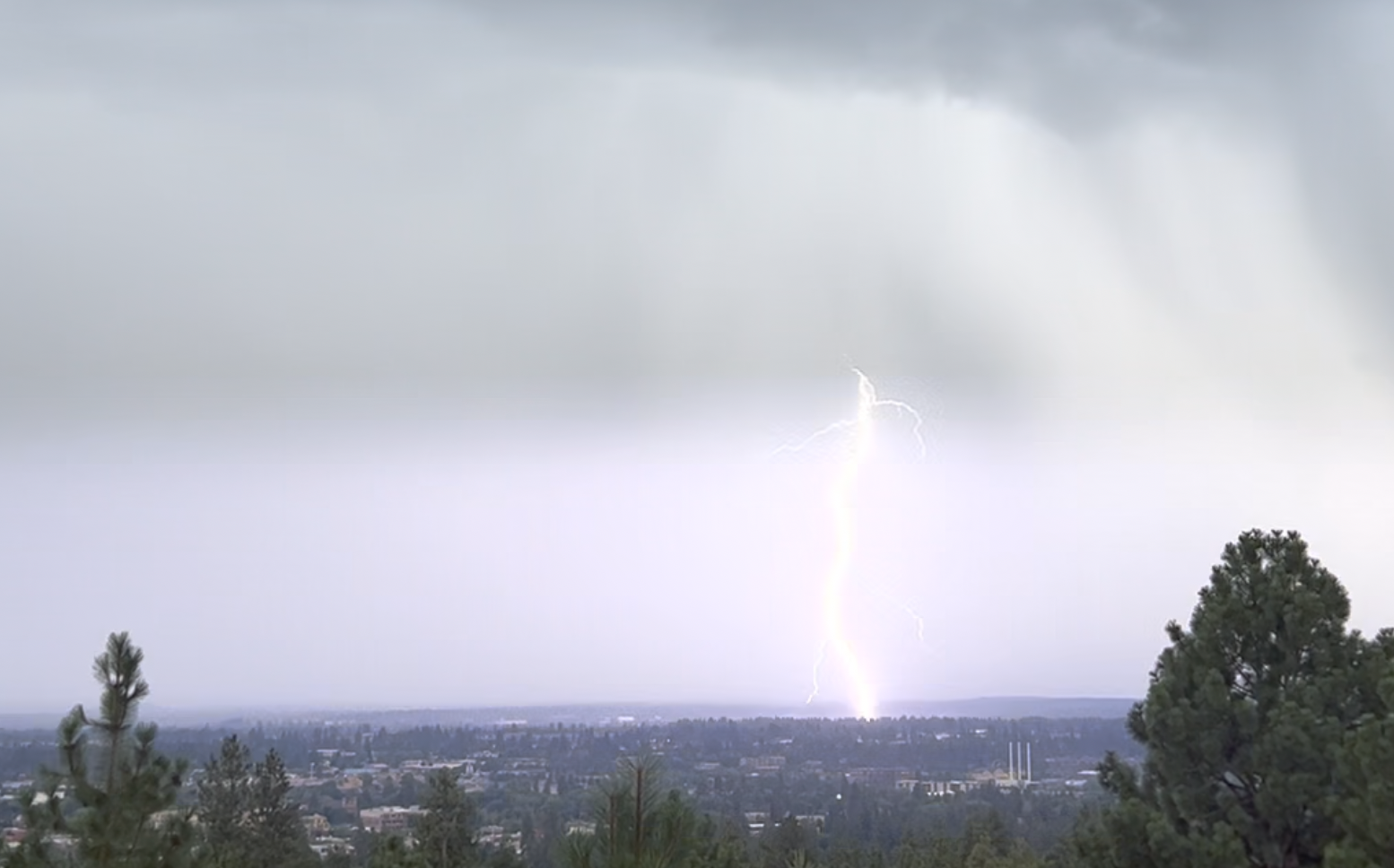Bend raises transportation fee, promising smoother roads, better sidewalks and more
Published 7:57 am Friday, May 9, 2025

- A pedestrian crosses Greenwood Avenue at NW Harriman Street in Bend.
The Bend City Council voted to increase the cost of street maintenance for residents and businesses Wednesday night, keeping the city on track to reach revenue targets for the Transportation Utility Fee it adopted last year.
The fee — which is tacked on to monthly utility bills — is part of Bend’s plan to offset the decline in traditional revenue streams like the gas tax and raise enough money to deliver on a long term plan to build out and maintain a growing transportation system while dealing with a backlog of deferred maintenance.
New rates will begin July 1. The fee is expected to generate $10 million in its second year, twice as much as in the first year. It’s part of a three-year rollout the city adopted last year, aiming to collect $15 million in year three and beyond, although officials have said recently they plan to evaluate other options before making another hike next year, vowing to examine how to generate transportation money from tourists.
Trending
Impacts on ratepayers will vary. Single-family residences that are paying $5.60 per month will soon pay $10.50. Multifamily housing units that are paying $4.35 apiece will soon pay $7.75. Businesses could see their bills rise by anywhere from a few dollars to a few hundred dollars per month.
How those costs should be distributed between residents and various types of businesses has been a point of discussion for months. Under the structure adopted Wednesday, residential accounts will pay 56% of the fee’s total cost while business accounts will pay 44%. The city deemed that the “middle ground” between the current rates and a proposal from the Bend business community that asked residents to shoulder a higher proportion of the fee.
Because there are many more residential accounts than business accounts, businesses end up paying more per bill. In phase two, some businesses will see only a slight cost increase while others will be hit harder. That’s because the city adopted a new tiered system that assigns higher rates to high-traffic businesses that have more of an impact on the transportation system according to modeling. That rate is multiplied by the square footage of a business to get the final cost.
For example, a 75,000-square-foot warehouse, which is modeled to have a relatively low impact on the system, would see its transportation bill rise from $425 to $469. But a 40,000-square-foot supermarket, which draws lots of cars, could see its bill go from $250 to $820.
Katy Brooks, CEO of the Bend Chamber of Commerce, said the city’s public process was open and interactive, providing an opportunity for the business community to make the fee “more fair and better distributed.
But, “The bottom line is that any fee increase at this time is problematic for local businesses. They have a lot of pressure between tariffs, taxes and other inflationary issues,” Brooks said in an email.
Trending
Residents pushed back against the fee increase in recent emails to the city. Some were seniors on limited incomes who said they don’t drive often. Others said the cost of transportation should be placed more heavily on tourists. Others questioned whether the transportation fee would really improve Bend’s roads.
The city has more than 900 miles of road lanes to maintain. That figure has grown by 10% in the past five years. There are also more than 500 miles of sidewalk and 200 miles of striped, separated bike lanes.
Though immediate impacts of the fee aren’t yet apparent, the city promises the fee will result in fewer potholes and smoother pavement, more frequent sweeping, plowing and striping, an increase in buffered bike lanes, sidewalks, accessible ramps, multi-use paths, and safer intersections and crossings.
The first noticeable difference from the fee will likely be later this year, after the city hires a new crew tasked with maintaining the paint markings on city streets, said Russell Grayson, chief operations officer with the city. In the winter, that crew will help out with snow removal, cutting down plowing response times. Last winter, the city had new snow removal equipment at its disposal for clearing separated bike lanes and similar infrastructure.
It likely won’t be until the third phase of the fee, including another hike, that the city would generate enough money for capital projects like sidewalk infill.
The city’s 2020 Transportation System Plan identifies about $1 billion in spending needs over the next two decades. As of now, the city knows where about three-quarters of that money will come from, with sources including the transportation fee, grants, the $190 million transportation bond passed in 2020 and system development charges.









